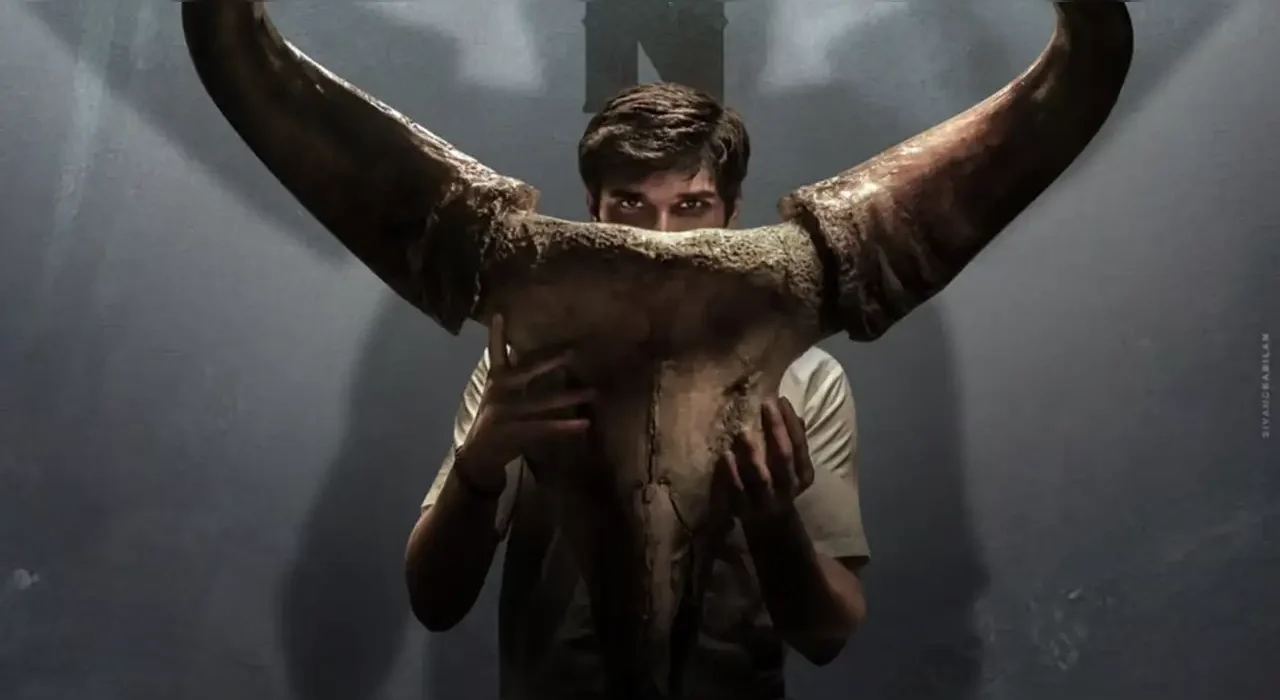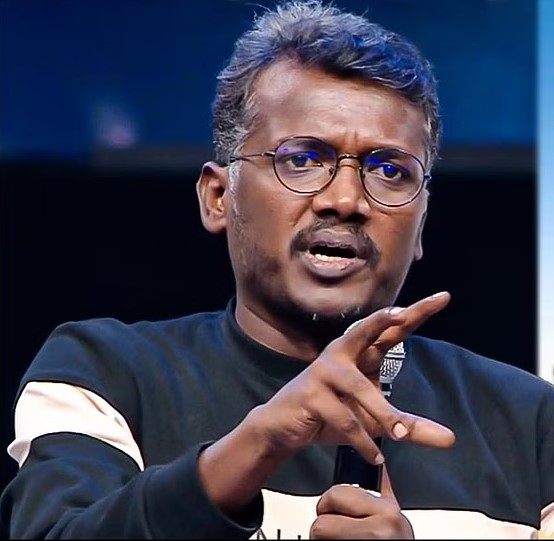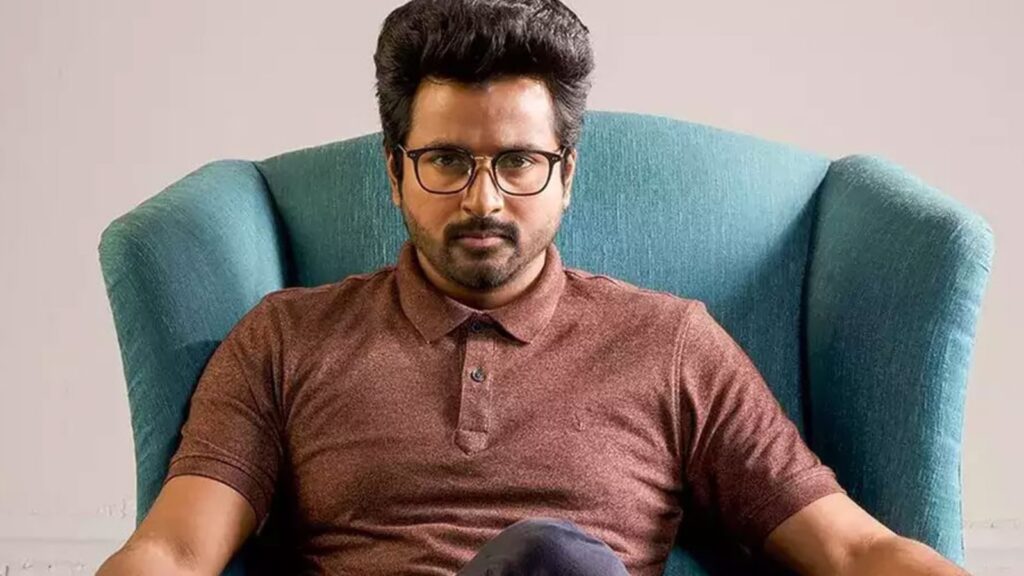‘Bison’ Nears ₹100 Crore: Mari Selvaraj and Dhruv Vikram Deliver a Game-Changer in Tamil Cinema!

Tamil cinema has always been known for its ability to blend social consciousness with mass appeal, and Bison: Kaalamaadan, directed by the visionary Mari Selvaraj and starring Dhruv Vikram, is the latest film to exemplify that balance. The movie has taken the Tamil film industry by storm, emerging as one of the most talked-about releases of 2025. With its powerful storytelling, stunning performances, and cultural relevance, Bison has already crossed significant box office milestones and is now inching toward the coveted ₹100 crore mark worldwide, a figure that far exceeds initial expectations, given its modest production budget.
A Story Rooted in Struggle and Spirit
Directed by Mari Selvaraj, known for socially charged films like Pariyerum Perumal and Karnan, Bison continues his signature exploration of caste, identity, and empowerment. The story is inspired by the real-life kabaddi player Manathi Ganesan, a symbol of perseverance against systemic barriers. Set in rural Tamil Nadu during the 1990s, Bison portrays the grit of a young man who rises from social oppression to sporting glory.
Dhruv Vikram plays the titular role with raw intensity, bringing both physical and emotional depth to the character. His transformation into a kabaddi athlete, both in physique and spirit, has earned widespread acclaim from critics and audiences alike. Many have described it as a defining performance in his young career, establishing him not just as a star kid but as a serious performer with his own identity.

Mari Selvaraj’s Vision and Storytelling
Mari Selvaraj has once again proven why he is one of the most compelling filmmakers in Indian cinema today. His storytelling is layered, combining realism with symbolism, and emotion with activism. Through Bison, he delves deep into the intersections of sport, caste, and dignity — using kabaddi not just as a game, but as a metaphor for survival and social assertion.
The film’s screenplay is tight and emotionally resonant. Each character from the protagonist’s teammates to the village elders contributes meaningfully to the larger narrative of resilience. The director’s command over tone, atmosphere, and subtext transforms what could have been a simple sports film into a profound cinematic statement.
Cinematographer Ezhil Arasu’s rustic visuals beautifully capture the earthiness of Tamil Nadu’s villages, while Theni Eswar’s camera frames the kabaddi matches with electrifying energy. Santhosh Narayanan’s music, meanwhile, underscores every emotion from anguish to triumph with rhythmic intensity and cultural authenticity.
Budget and Box Office Performance
One of the most remarkable aspects of Bison’s success story is how a film made on a relatively modest budget has achieved such massive box office results. While the exact production cost hasn’t been officially disclosed, industry sources suggest that Bison was produced for around ₹25–30 crore modest by Tamil cinema standards, especially for a film with large-scale sports sequences and intense period settings.
Despite its limited budget, the film’s commercial and critical reception has been extraordinary. According to reports, Bison grossed around ₹35 crore in India within the first 10 days of release. Within two weeks, the worldwide total had crossed ₹52 crore, with strong holdover collections in Tamil Nadu, Kerala, and select international markets.
Now, as the film continues to draw packed houses through word of mouth, it’s fast approaching the ₹100 crore milestone a rare feat for a socially driven drama. Trade analysts have pointed out that the film’s low production cost and high theatrical returns make it one of the most profitable Tamil releases of 2025.
Critical Reception and Audience Response
Critics across the board have hailed Bison as a triumph of storytelling and performance. Reviewers have praised Mari Selvaraj’s direction for balancing message-driven cinema with mainstream appeal. The authenticity of the rural setting, the emotional weight of the characters, and Dhruv Vikram’s breakthrough performance have all contributed to the film’s impact.
Audiences, too, have connected deeply with the film’s themes. Social media has been flooded with emotional reactions, fan art, and tributes celebrating the spirit of the movie. Many have lauded its unflinching portrayal of caste-based realities, while also appreciating its inspiring message of self-worth and resilience.
Even Tamil Nadu Chief Minister M.K. Stalin praised the film, calling it “a diamond in Mari Selvaraj’s crown,” a nod to its cultural and political significance. With such endorsements and widespread admiration, Bison has transcended the boundaries of entertainment to become a conversation-starter on equality and empowerment.

Dhruv Vikram: A Star is Reborn
For Dhruv Vikram, Bison represents both a challenge and a redemption. After his debut in Adithya Varma, which received mixed responses, Dhruv faced the daunting task of proving his acting prowess beyond the shadows of his father, the celebrated actor Vikram. With Bison, he has done exactly that.
His physical transformation into a kabaddi player, achieved through rigorous trainin,g adds authenticity to his performance. More importantly, Dhruv brings emotional depth to the role, portraying pain, anger, and pride with stunning conviction. Critics have particularly highlighted his body language and expressive control during key kabaddi sequences, calling it one of the finest performances by a young Tamil actor in recent years.
Social Impact and Symbolism
Beyond box office numbers, Bison stands out for its social commentary. Mari Selvaraj uses the kabaddi field as a microcosm of society a space where equality is constantly negotiated. The film’s title itself, Bison Kaalamaadan, symbolizes strength, resistance, and untamed energy traits that define not just the protagonist but the communities he represents.
Selvaraj doesn’t shy away from depicting the harsh realities of caste discrimination. Yet, his approach is not merely accusatory; it’s humanistic. He focuses on how courage, talent, and persistence can challenge oppressive systems. This narrative has struck a chord with viewers, especially among younger audiences who see Bison as both a sports drama and a social revolution on screen.
The Road Ahead
As Bison continues its strong run at the box office, it has become clear that Mari Selvaraj has crafted not just another hit but a cultural milestone. The film’s success reinforces the idea that meaningful cinema, when executed with conviction, can also be commercially viable.
If current trends continue, Bison is expected to comfortably enter the ₹100 crore club within the next few weeks a monumental achievement for a mid-budget Tamil film without traditional commercial tropes. Its international reach is also growing, with special screenings and festival interest reported in Europe and North America.

Conclusion
Bison is more than a film it’s a movement that celebrates resilience, equality, and the indomitable spirit of sport. Mari Selvaraj’s bold vision, Dhruv Vikram’s career-defining performance, and the film’s unexpected box office dominance have together rewritten the rules of Tamil cinema.
As the film nears the ₹100 crore mark, it stands as a testament to the power of good storytelling and the audience’s hunger for authenticity. Bison proves that when a film speaks truthfully about people, their struggles, and their dreams, it doesn’t just earn money, it earns respect, resonance, and a place in cinematic history.











